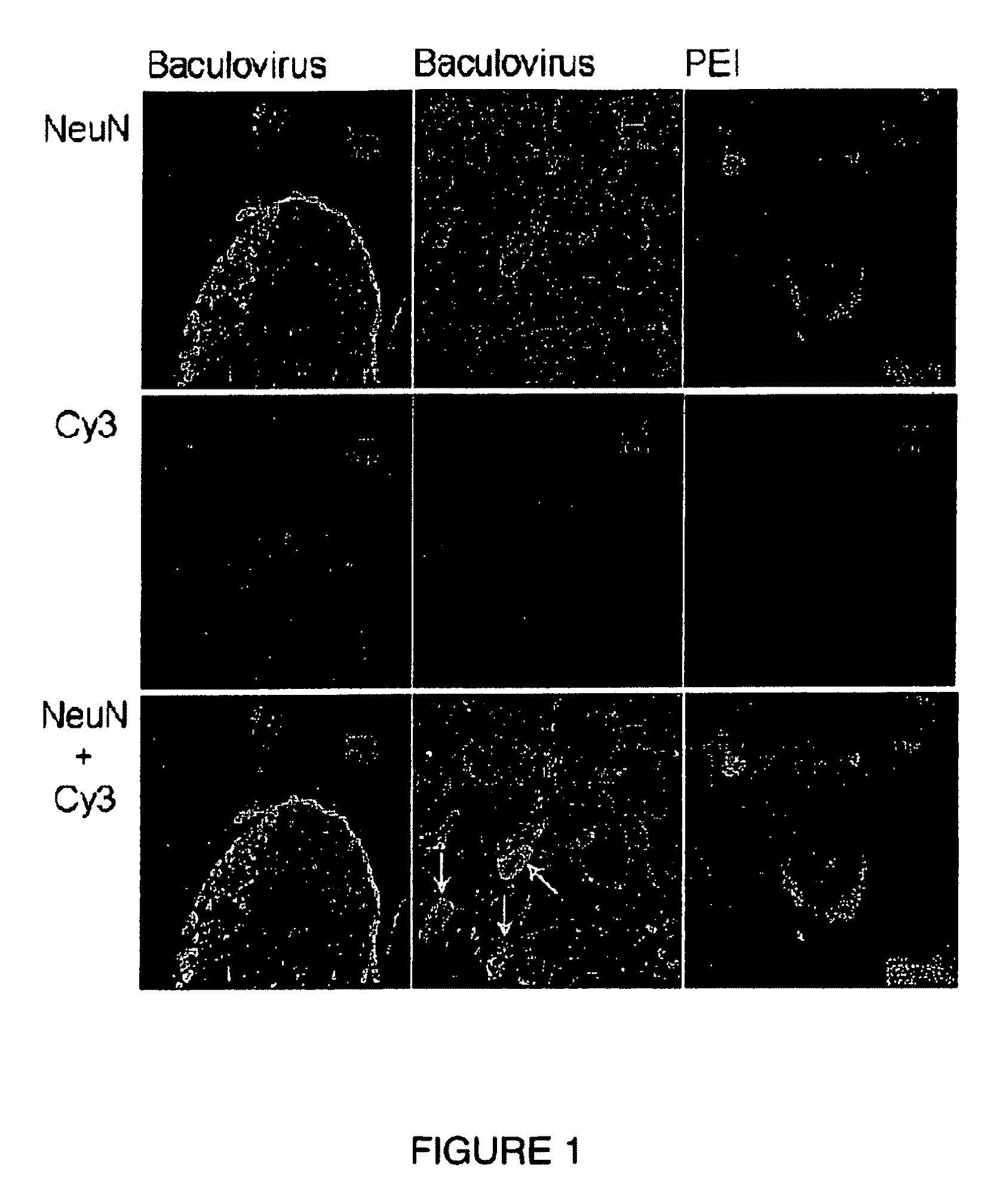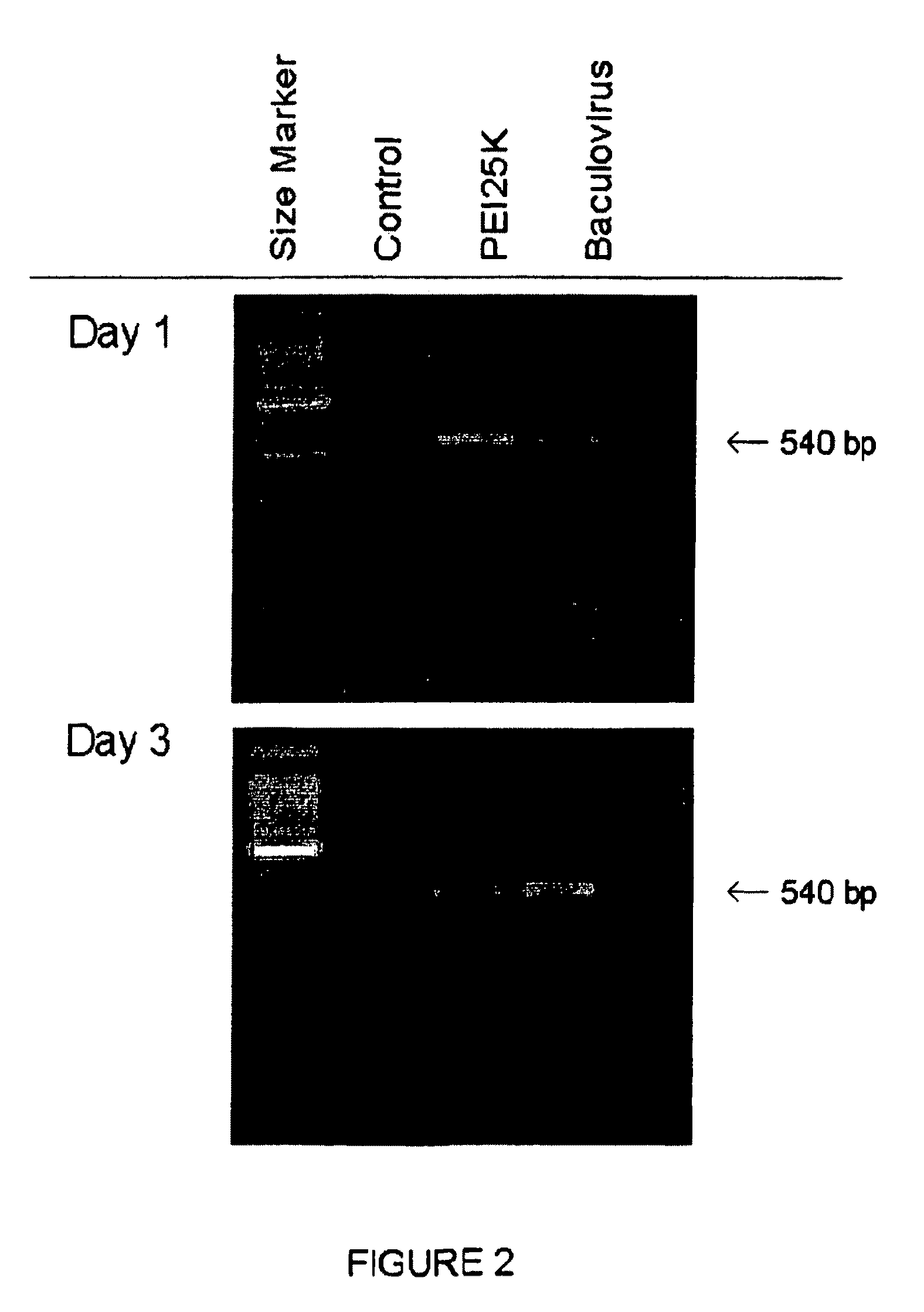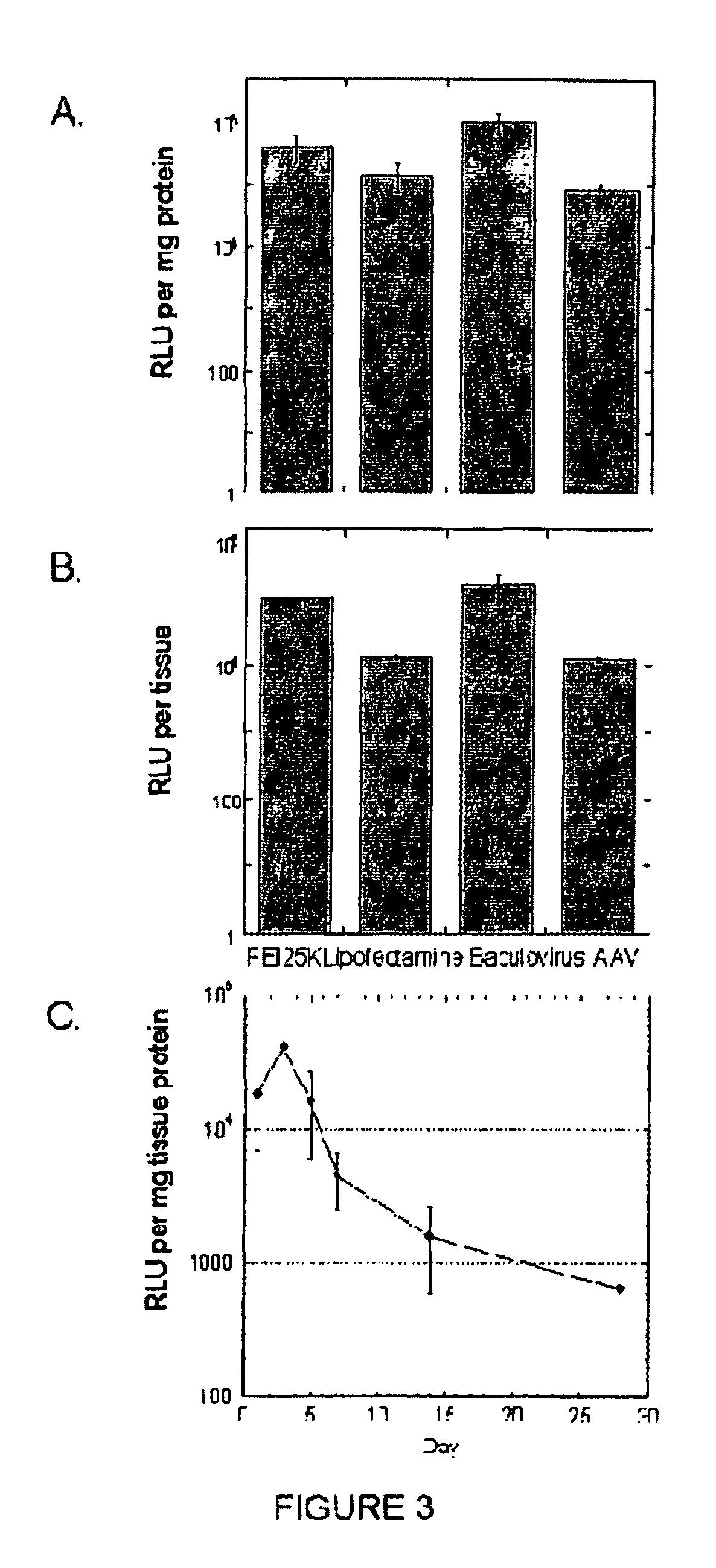Method of delivery of nucleic acids to peripheral neurons
a technology of nucleic acids and peripheral neurons, applied in biochemical apparatus and processes, plant growth regulators, biocide, etc., can solve problems such as loss of function at the donor site, formation of potentially painful neuromas, and structural differences between the donor and the recipient nerv
- Summary
- Abstract
- Description
- Claims
- Application Information
AI Technical Summary
Problems solved by technology
Method used
Image
Examples
example 1
Gene Transfer to DRG via Lumbar Intrathecal Injection
[0105]We started with evaluating the uptake of gene vectors by DRG after intrathecal administration of baculovirus vectors or PEI / DNA complexes covalently labelled with Cy3. DRG close to the injection site were collected at 2 days post-injection and their sections were stained by anit-NeuN. Red Cy3 signals were detectable in the DRG, mainly in the cytoplasm of NeuN-positive cells under higher magnifications (FIG. 1); PCR analysis of the samples of DRG collected at day 1 and 3 post-injection revealed the existence of transported reporter genes in these PNS regions after the CNS injection (FIG. 2).
[0106]Four different types of gene delivery systems and vectors with a luciferase reporter gene, PEI / DNA complexes, lipofectamine / DNA complexes, baculovirus vectors and AAV-2 vectors, were tested for their effects in mediating transgene transfer into DRG cells. Two days after lumbar intrathecal injection, luciferase activities were easily ...
example 2
NGF cDNA Transfection and Nerve Regeneration through Nerve Guide Conduits
[0107]NGF, a neurotrophic factor predominantly acting on sensory and sympathetic neurons (Thorne, R. G., and Frey, W. H. II 2001, Clin Pharmocokinet 40:907), was selected to test the effects of its expression in DRG on peripheral nerve regeneration through nerve guide conduits (NGCs), a device widely tested in pre-clinical studies to repair nerve defects (Schmidt et al. 2003, Ann. Rev. Biomed. Eng. 293). We examined the expression of NGF cDNA from PEI-mediated gene delivery. After transfection of COS7 cells, the NGF concentration increased in the culture media, as detected in a sensitive ELISA, with a level of about 1 ng per ml and being 6 folds higher than the control (FIG. 6A). Similar increase was also observed when the cell lysate was analysed (FIG. 6B). After lumbar intrathecal injection of PEI / NGF cDNA complexes, the expression level of NGF in DRG was three-fold higher than the control and persisted for a...
example 3
Effects of NGF Expression on Nerve Regeneration
[0108]The successful rate of nerve regeneration through NGCs, as demonstrated in a pinch test, was 87% in the NGF group at 4 weeks post-operation, versus 67% in the control group. The regenerated tissue cables, which had bridged a 10-mm gap between two nerve stumps, could be found inside the conduits collected from the rats that were positive in the pinch test. Those tissue cables collected from NGCs of the NGF group showed improved regeneration qualities over their controls, with significant increase in the diameter of nerve fibers and decrease in G-ratio (Friende et al. 1982, Brain Research 235:335), a ratio determined by axon diameter vs. myelinated fiber diameter (FIG. 7). In other two parameters examined, fiber population and density, ever though the certain improvement in the NGF group was visible, no statistically significant difference was found, probably due the big standard deviation (FIG. 7).
[0109]Morphological hallmarks of n...
PUM
| Property | Measurement | Unit |
|---|---|---|
| thermal melting point | aaaaa | aaaaa |
| humidity | aaaaa | aaaaa |
| temperature | aaaaa | aaaaa |
Abstract
Description
Claims
Application Information
 Login to View More
Login to View More - R&D
- Intellectual Property
- Life Sciences
- Materials
- Tech Scout
- Unparalleled Data Quality
- Higher Quality Content
- 60% Fewer Hallucinations
Browse by: Latest US Patents, China's latest patents, Technical Efficacy Thesaurus, Application Domain, Technology Topic, Popular Technical Reports.
© 2025 PatSnap. All rights reserved.Legal|Privacy policy|Modern Slavery Act Transparency Statement|Sitemap|About US| Contact US: help@patsnap.com



